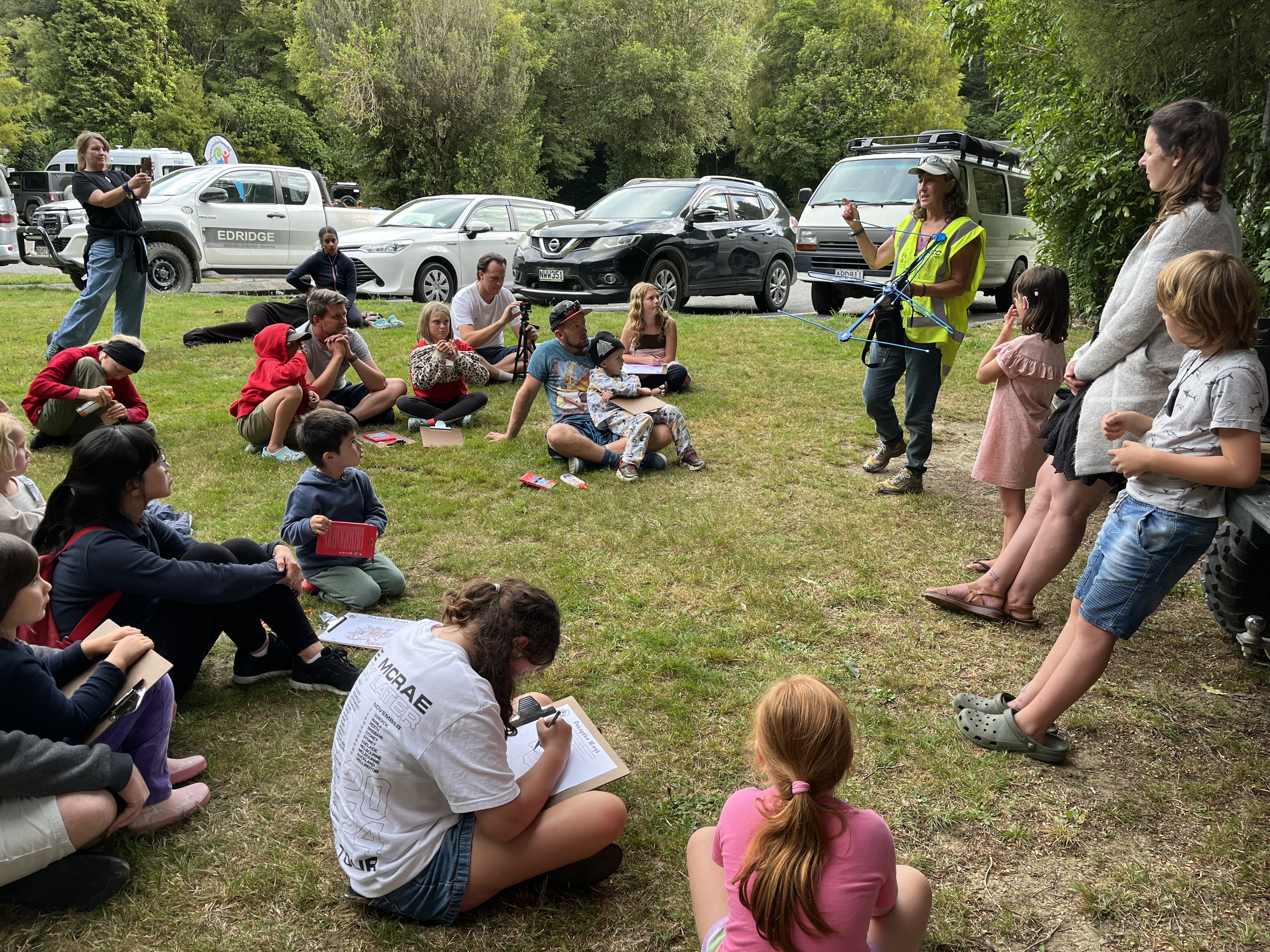An evening with a bat monitorer
When Nick Eade was growing up, while she always displayed an interest in wildlife and animals, like most people she had no idea there were native bats living in New Zealand.
However, today she is a part of the team working with Forest & Bird’s Te Hoiere Bat Recovery Project.
Nick has been actively involved since the efforts to save pekapeka-tou-roa (long tailed bat) or Chalinobus tuberculatus at Pelorus Bridge began 14 years ago.
Four reserves are part of Forest & Bird’s Bat Recovery Project – Pelorus Bridge and the Brown River, Carluke and Ronga River Reserves in the Rai Valley – all selected because of the presence of pekapeka. At 170 hectares, Pelorus Bridge is a lot bigger than the others.
The “mark and recapture” process used may sound like a simple concept, but it requires considerable mental and physical effort, often in terrain that is not sympathetic to the two-legged pursuit of a winged animal. And success is not always guaranteed as bats tend to have a mind of their own, according to Nick.
“To catch the bats first we need to catch one or two, usually in ground-based harp traps with an acoustic lure. We then put radio transmitters on them and track them back to their communal roost trees. Once we have located a roost tree, the traps can be set. We catch groups of bats at a time,” Nick explains.
“All bats in the roost are banded and we repeat this process until most are banded and counted in the area. These statistics are used to determine survival rates,” she said.
Technological advances such as the use of thermal equipment in the past two seasons has allowed the team to sometimes locate roosts without the time-consuming step of having to initially catch bats.
“By tracking the bats around the landscape we also learn which areas are most used by bats and where predator control and restoration might be best targeted,” Nick said.
With two weeks still to go in the monitoring season, the ‘bat team’ had already caught 164 bats at Pelorus Bridge. Of these 93 were individuals (some bats get caught more than once). In the Rai area a total of 150 bats had been caught and of these 77 were individuals.
“This year's numbers are higher than we've ever had before. Previous numbers were 46 bats at Rai in 2023 season and 86 individuals at Pelorus in the 2024 season. Of course, we don't know if there are actually more bats or we are just catching more, but it's still exciting news,” Nick said.

Forest & Bird bat monitorer Nick Eade talks about her work and shares some fun bat facts at a recent Conservation Kids NZ pekapeka evening at Pelorus Bridge

